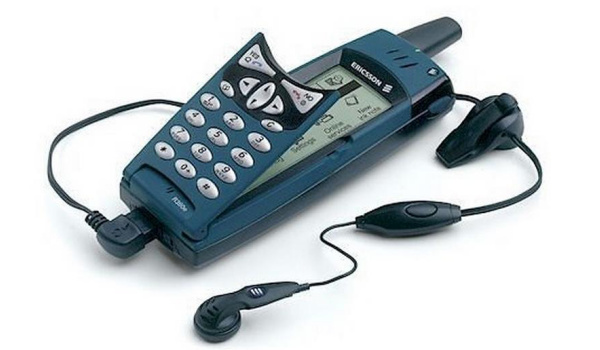In December 2011, in publishing the news of Sony taking over Sony Ericsson, I made a brief mention of the Ericsson R380 as the very first Symbian smartphone. In this feature article, I am going down memory lane to talk about that elegant device. Being my very first smartphone, the Ericsson R380 holds a special place in my mind.

The very first time that I saw it, it was love at first sight. Gadget lust waxed strong within me and I told myself that I was getting one. But it wasn’t just my first smartphone, it was the first smartphone ever! Well, more accurately, it was the first device to be marketed as a “smartphone”.
The “First” Smartphone Dilemma
Nokia had the 9000 Communicator out in the market in 1996 long before the R380 arrived, but Nokia never marketed it as a smartphone (the term “smartphone” was not coined until 1997). There was also the IBM Simon Personal Communicator, a handheld, touchscreen phone and PDA combined released in 1994. Because of its features and capabilities, it can also arguably be referred to as the first smartphone. So, which of the three – R380, 9000, and Simon – you pick as the first smartphone is arguable. But it certainly wasn’t the iPhone! Not by a long, long shot.

But the first device to be marketed as a “smartphone” was certainly the Ericsson R380, though it wasn’t the first to have smartphone capabilities.
Meet The Great Grandfather Smartphone
Released in 2000AD, two years after Psion became Symbian, I didn’t get my hands on one until December 2002. The R380 was PDA and phone wrapped into one, and in a nice catchy form factor. The R380 looked and worked like any other mobile phone of its day when closed up. But you could open the front flip to reveal the large landscape display. It weighed only 164g.
The R380’s main specs:
- WAP 1.1 browser (an improved version later shipped with WAP 1.2.1)
- Large 3.5-inch backlit monochrome STN touchscreen display (120 x 360 pixels)
- Flip cover with regular alpha-numeric keyboard for use as a regular phone
- Stylus for use with the resistive touchscreen
- POP3/IMAP Email
- Calendar & notes
- Synchronization with Microsoft® Outlook and Lotus® Notes and Organizer
- Symbian OS version 5
- Infrared port
- GSM 900/1800 dual band phone
- 2MB RAM
- 1.2 MB user-accessible storage
- Handwriting recognition
- Voice notes
- Speakerphone functionality
- Dial-up (CSD) internet connectivity
- 1 -chord (monophonic) ringtones
- Built-in Games:
- Built-in modem
- RS-232 cable for PC connectivity
Though running an early version of Symbian, the OS was “closed” at the time, as no 3rd party apps could be installed on it. But it came with pretty much what everyone used then.
Here are some screenshots:

The R380 was a delight to use back then. I subscribed to CSD (circuit Switched Data AKA dial-up internet) with MTN back then, with which I browsed and managed my emails. At that time, this was magic to almost everyone I met here in Nigeria then. Very few of us used mobile internet on mobile back then.
There were no expansion slots yet, and Bluetooth wasn’t on the table either. But infrared was king of the day for wireless connectivity.
I wish I had details of the processor (if someone can help me out with that, I’d be delighted), but the R380 performed admirably. It wasn’t a perfect smartphone. I also remember some occasional freezing up, especially when using internet connectivity (which in retrospect may have been network issues).
It is such a privilege to have been around early enough to use the very “first” smartphone on the planet as my first smartphone. Ladies and gentlemen, a hat tip to the stately Ericsson R380.
- Don’t miss our mobile phone reviews.
- Follow our news on Google News.
- Join our WhatsApp Group, to be notified of the most important articles and deals,
- Follow us on Instagram, Facebook, Twitter, and YouTube.